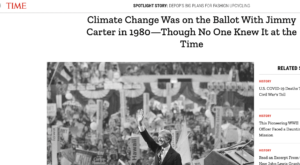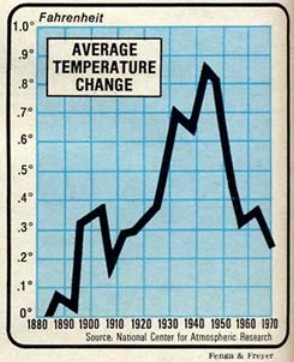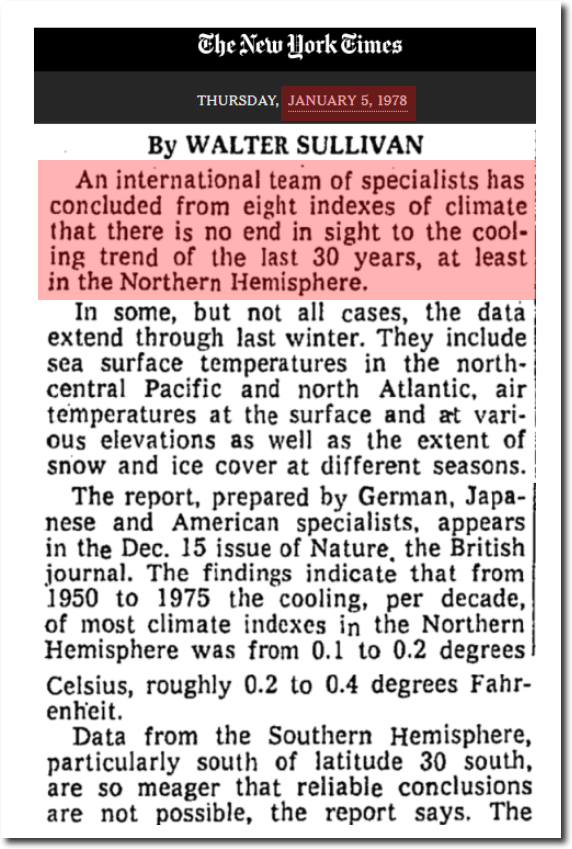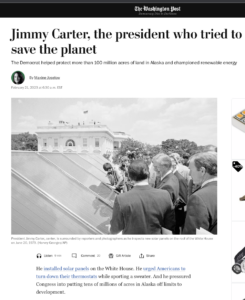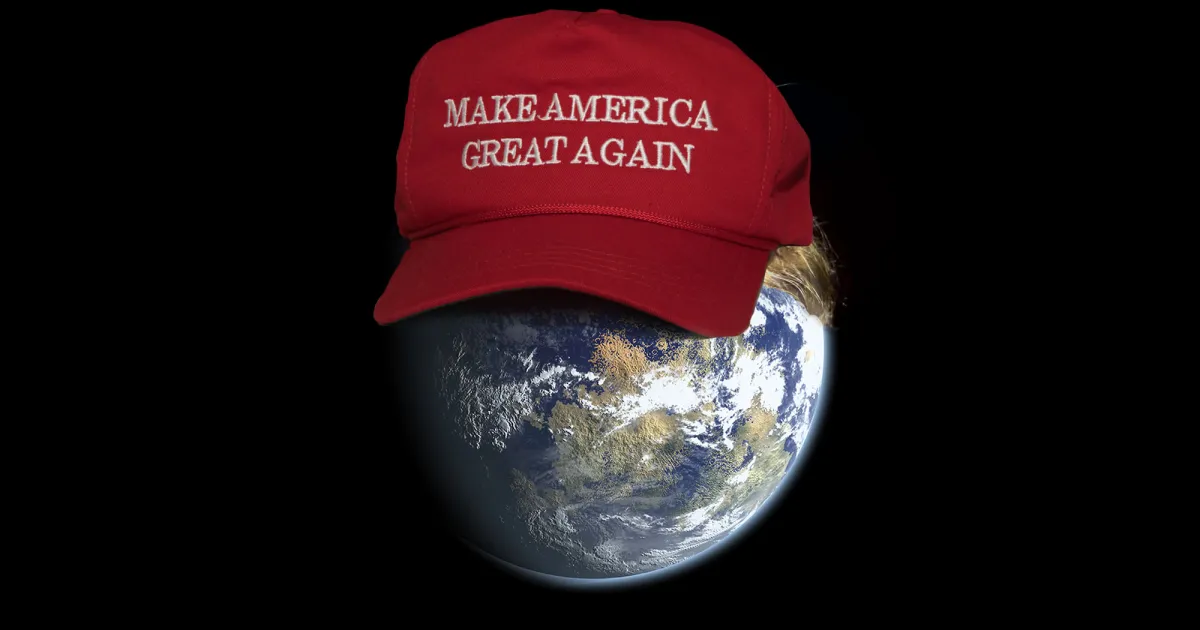WaPo excerpt August 18, 2021: Yet now, 40 years removed from the White House, the most famous resident of Plains, Georgia, is riding a new wave of attention as biographers, filmmakers, climate activists and Carter’s fellow Democrats push to recast his presidential legacy, even as Republicans sometimes try to remind voters of the volatile economy and international affairs that doomed Carter to one term. … Altogether, the new works depict not a failed president but an ambitious, far-reaching one who is getting a more nuanced assessment from history than he got from his contemporaries. …
In the past year, however, CNN released a documentary titled: “Jimmy Carter: Rock & Roll President” and independent documentarists Jim Pattiz and Will Pattiz debuted “Carterland” at the Atlanta Film Festival. …
“Carter had these very farsighted views of how he wanted to solve the energy crisis, and it involved conservation, but also involved turning away from fossil fuels and turning toward renewable energy, things like solar power and other renewables,” said Jim Pattiz, 29.
Carter put solar panels on the White House, and he called for “shared sacrifice” to confront energy shortages. But he couldn’t overcome voters’ frustrations with fuel prices and availability. The solar panels were removed during Reagan’s presidency. But Will Pattiz, 30, said time vindicated Carter. If “President Carter had gotten an extra term in office,” he said, “we likely wouldn’t be having a climate crisis right now.”
Carter likely wouldn’t go that far. In 2019, the former president used his last annual presentation at The Carter Center in Atlanta to blame himself for his post-presidential center being “basically mute on the subject of global warming.”
Full Article:
Carter’s famous 1979 “malaise speech”
Ronald Reagan blamed for global warming.
"If President Carter had gotten an extra term in office, we likely wouldn’t be having a climate crisis right now.”https://t.co/pePBVxRrBM
— Steve Milloy (@JunkScience) August 19, 2021
They were literally concerned about the opposite of global warming back then https://t.co/4uApt0TCsE
— JW (@WokeLawyer) August 19, 2021
Related links:
Time Mag: Sept 2020: Climate Change Was on the Ballot With Jimmy Carter in 1980—Though No One Knew It at the Time – “Reagan’s landslide victory over Carter in the 1980 election takes on a tragic dimension” – Excerpt: When he became President, Carter was the first global leader to recognize the problem of climate change. In 1977, scratching his itch as a planner and steward of the earth, he commissioned the Global 2000 Report to the President, an ambitious effort to explore environmental challenges and the prospects of “sustainable development” (a new phrase) over the next 20 years. As part of that process, the White House Council on Environmental Quality (CEQ) issued three reports contending with global warming, the last of which—issued the week before Carter left office—was devoted entirely to the long-term threat of what a handful of scientists then called “carbon dioxide pollution.” The report, written by Gus Speth, Carter’s top aide on the environment, urged “immediate action” and included calculations on CO2 emissions in the next decades that proved surprisingly accurate. The large-scale burning of oil, coal and other fossil fuels could lead to “widespread and pervasive changes in global climatic, economic, social, and agricultural patterns,” the CEQ report concluded with great prescience. … With these facts in hand, Reagan’s landslide victory over Carter in the 1980 election takes on a tragic dimension: Carter had acted on every other CEQ report issued in the previous four years with aggressive legislation and executive orders. He almost certainly would have done so on this one, too, had he been reelected. Gains made under Carter’s presidential leadership in the early 1980s might have bought the planet precious time. Instead, for the next 12 years, under Reagan and George H.W. Bush, the U.S. government would view global warming as largely unworthy of study, much less action. Then came 25 years of stop-and-start efforts under administrations of both parties, followed by a return to denial under Trump. There are lessons here for the present. Carter was a political failure—confronted with a bad economy, the Iran hostage crisis, a divided Democratic Party and a talented challenger in Reagan—but he was a substantive and visionary success. …One recommendation—covered in the very last paragraph of a New York Times story that ran on page A13—encouraged industrialized nations to reach agreement on the safe maximum level of carbon dioxide released into the atmosphere. The CEQ report suggested trying to limit global average temperature to 2°C above preindustrial levels—precisely the standard agreed to by the nations of the world 35 years later in the Paris Climate Agreement that has now been abandoned by President Trump.
Flashback 1983 Christian Science Monitor: Summing it up, Mr. Carter said, ”Unless we act together, the situation will inevitably get worse. In 17 years, global oil production per person is expected to be half what it was in 1979, and during this time we are likely to lose 30 percent of our tropical forests, 20 percent of plant and animal species, and several inches of topsoil.”
NCAR newsweek_coolingworld.pdf
National Academy Of Sciences Science News
Before ‘global warming’ caused droughts – – Global Cooling Led To Widespread Droughts In The 1970s
Don’t let history be rewritten! The facts about the 1970s global cooling ‘consensus’
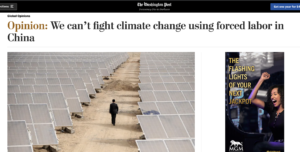
Excerpt:
Self-conscious about his own idealism, or perhaps just realistic, the President gave voice to his doubts about the panels: “A generation from now, this solar heater can either be a curiosity, a museum piece, an example of a road not taken, or it can be a small part of one of the greatest and most exciting adventures ever undertaken by the American people.”
The point of all this was simple, Carter said. America was to harness “the power of the sun to enrich our lives as we move away from our crippling dependence on foreign oil.”
Carter was a person of simplicity, of conservation; he was also sort of an oddball, a hybrid, an anti-political Christian proto-green who had donned a cardigan sweater, lowered the White House thermostat, and declared “Sun Day” on May 3, 1978.
A year later he had his panels.
In the stillness of that roof-top scene – captured now in celluloid for history – Carter reaches out both hands, straight out, palms to the ground, as if to feel the heat. Trees ring the background. The panels reflect the image of his outstretched arm. An election defeat, a grinding stagflation, a mad Ayatollah, and a bungled hostage crisis were all soon to end his political future. But in that moment he was a creator.
The panels were primitive but serviceable. They heated water. They cost about $28,000 to install. According to the person who convinced Carter to put up the panels, George Szego, who died this year at 88, they were models of industry. They cranked out hot water “a mile a minute,” he said.
Carter, in his State of the Union Address the year the panels were installed, presented an ambitious plan to put America on a clean energy path: 20 percent of energy from renewable sources by 2000. Part of his idea was to go far beyond simple hot water solar collectors and direct government research funds towards the development of photovoltaic cells, the kind that could put energy into the grid.
That’s the kind of cell that we are still trying to perfect now, in 2008, some 30 years later, when we still get only 6 or 7 percent of our energy from renewables.
#
Update 2023: WaPo: Jimmy Carter, the president who tried to save the planet
Not mentioned by WaPo @maxinejoselow:
Jimmy Carter:
1. Helped start a coal boom to reduce OPEC oil used for power generation.
2. Helped launch efforts to extract oil/gas from shale also to reduce OPEC dependence.
Carter helped save us from OPEC. https://t.co/X70kBXDgvr
— Steve Milloy (@JunkScience) February 21, 2023



